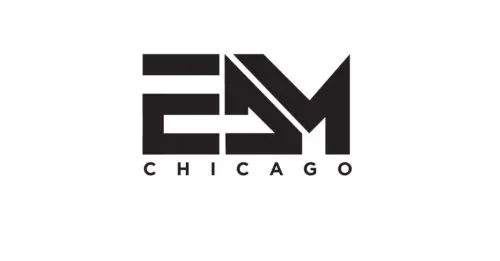
Imagine this: a recent report by the Healthcare Financial Management Association (HFMA) highlighted that hospitals lose up to $125 billion annually due to billing inefficiencies.
Shocking, right? Now, think about what that means for your practice—missed income, delayed payments, and avoidable stress. What if I told you there are practical steps to fix it?
Let’s get straight into the nitty-gritty of making hospitalist billing less of a headache and more of a well-oiled machine.
Key Points:
- Why efficient billing matters for hospitalists.
- How to identify common billing pitfalls.
- Practical tips for speeding up reimbursements.
- Tools and strategies to optimize billing processes.
- Compliance tips to avoid costly audits.
Why Efficient Hospitalist Billing Matters

Managing hospitalist billing isn’t just about crunching numbers; it’s about keeping your practice financially healthy and reducing administrative headaches.
A seamless billing process ensures your team gets compensated for their hard work without delays.
According to Claimocity, hospitalist medical billing services streamline this process, making it easier to collect what you’re owed, track claims, and avoid unnecessary audits.
Now imagine your staff no longer scrambling to fix rejected claims or chasing overdue payments.
Instead, they could focus on patient care, confident that the financial side is under control. That’s the transformative power of efficient billing systems.
Identifying Common Billing Pitfalls
Errors in billing processes can snowball into significant financial losses. Spotting these pitfalls early is crucial. Below are some frequent problems:
- Incomplete Documentation: Without thorough and accurate documentation, your claims are practically doomed. Insurers are unforgiving when essential details are missing, leading to denials that could have been avoided.
- Upcoding and Downcoding: Incorrect coding, whether intentional or accidental, can cause red flags. While upcoding may invite audits, downcoding results in lost revenue. Both are equally problematic.
- Missed Deadlines: Many practices struggle with meeting payer deadlines, resulting in otherwise valid claims going unpaid. Timeliness is critical for every submission.
- Fee Schedule Confusion: Every payer has unique fee schedules that can change without much warning. Failing to keep up with these adjustments leads to underpayments and unnecessary frustration.
Pro Tip: Keep a checklist for every claim—from documentation review to submission—to reduce errors.
Steps to Maximize Reimbursement

Maximizing reimbursement isn’t magic; it’s methodical. Here are some steps that can turn chaos into cash flow:
- Audit Your Processes Regularly: Conduct detailed reviews of claims every month. Catching and fixing errors early can prevent larger financial issues.
- Invest in Technology: Advanced software solutions help automate repetitive tasks, track payments, and provide actionable insights. Automation reduces the chances of human error significantly.
- Master Payer-Specific Rules: Each payer operates under unique guidelines. Know these rules inside and out to minimize claim rejections.
- Ongoing Training: Regular training sessions for your team ensure everyone is equipped to handle new codes, payer rules, and billing trends.
- Prioritize Charge Capture: Missed charges are missed income. Ensure every service is logged accurately and submitted promptly.
- Contract Negotiations: Review your contracts with insurers. If your practice’s patient volume justifies it, don’t hesitate to renegotiate for better terms.
Fun Fact: Practices that renegotiate contracts every three years see an average of a 15% increase in reimbursement rates!
How to Speed Up the Payment Process
Efficient billing doesn’t just improve cash flow; it also reduces stress for your entire team. Let’s explore practical ways to accelerate payments:
- Submit Clean Claims: The fewer errors in a claim, the faster it gets processed. Triple-check every claim before submission.
- Track Denials Aggressively: Don’t let denied claims collect dust. Resolve them within 48 hours to prevent revenue leaks.
- Use Scrubbing Software: Claim-scrubbing tools identify common errors before claims reach the payer, increasing approval rates.
Example: A practice that implemented a claim-scrubbing tool reduced their denial rate by 35% within the first quarter. That’s money back into your pocket.
What Studies Say About Billing Efficiency
Evidence backs the importance of streamlined processes:
- A study by the American Medical Association revealed that 20-30% of claims are rejected due to preventable errors. Fixing these can significantly improve revenue. (Source)
- Research in the Journal of Hospital Medicine found that poor charge capture results in a 5-10% revenue loss annually. Practices with automated systems see lower losses. (Source)
Preventing Costly Audits Through Compliance
Audits are every practice’s nightmare, but they’re often avoidable. Focusing on compliance ensures you’re always audit-ready:
- Double-Check Coding: Mistakes in coding often trigger audits. Regular reviews minimize risk.
- Follow Regulations: Stay updated on changes in federal and state guidelines.
- Assign a Compliance Officer: Having someone dedicated to overseeing compliance can save your practice thousands of dollars.
Real-Life Example: A practice that appointed a compliance officer reduced audit-triggering errors by 40% within six months.
Streamlining Communication Between Teams

Efficient billing requires collaboration across departments. Here’s how to improve internal communication:
- Schedule weekly check-ins between clinical and administrative staff.
- Use shared digital platforms for real-time updates on claim statuses.
- Create a feedback loop to address recurring billing issues.
Key Insight: Teams that meet regularly to review billing data see fewer errors and quicker resolutions.
Making the Process Less Stressful
Sometimes, it’s the little things that make a big difference. Here are three ways to ease the burden of billing:
- Set Small, Achievable Goals: Break the process into manageable steps. Tackling it all at once can feel overwhelming.
- Celebrate Successes: Did you just achieve a 98% clean claims rate? Celebrate with your team. Positive reinforcement goes a long way.
- Outsource When Necessary: If billing feels like an uphill battle, consider outsourcing to a trusted service.
Fun Fact: Practices that outsource see a 30% increase in efficiency on average.
Final Thoughts
Hospitalist billing doesn’t have to be overwhelming. By addressing common pitfalls, leveraging technology, and focusing on compliance, you can turn billing into a seamless part of your practice.
Every dollar collected means more resources for patient care and less stress for your team.
The time to act is now—optimize your processes and watch the positive impact it has on your practice.









